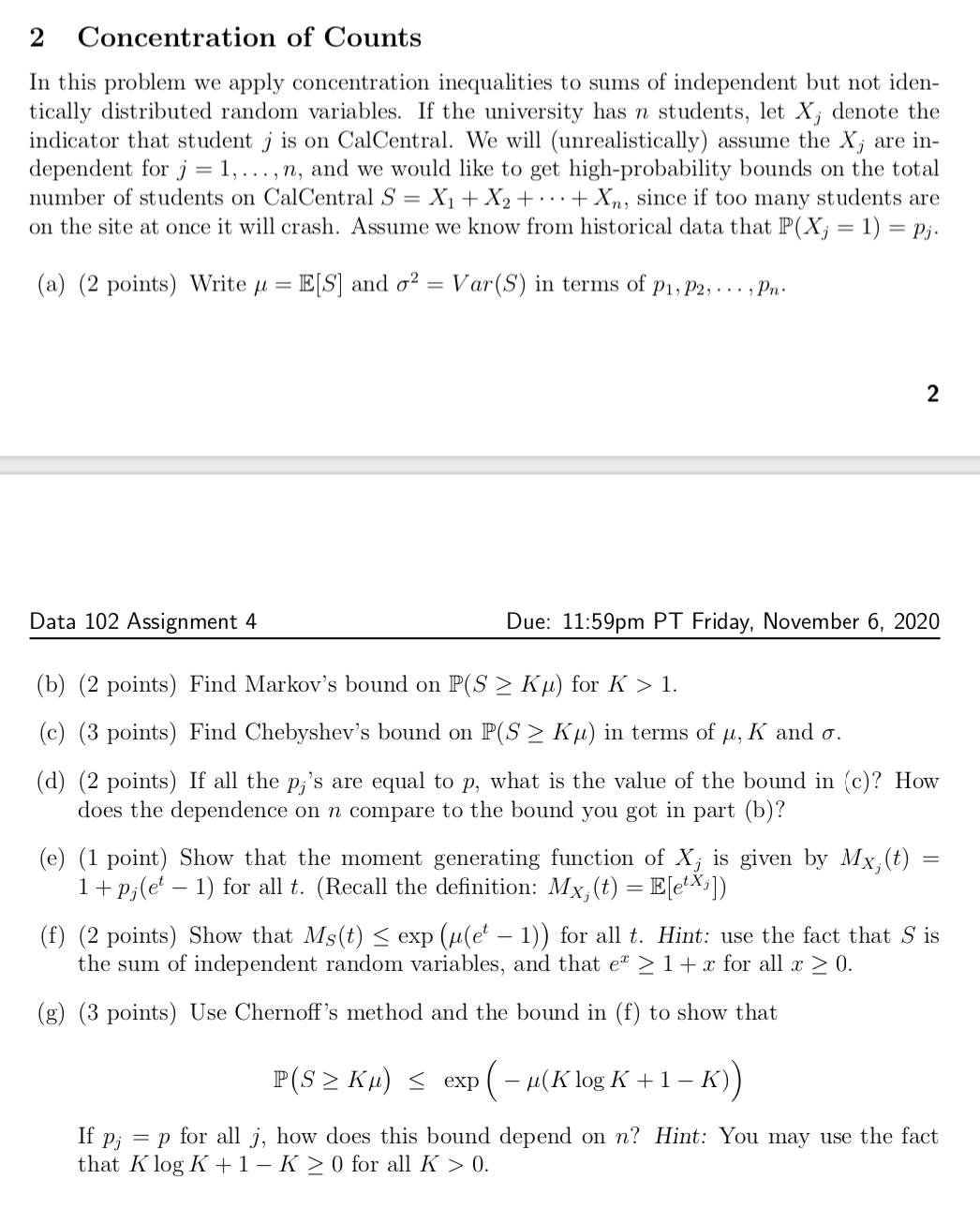Answered step by step
Verified Expert Solution
Question
1 Approved Answer
In this problem we apply concentration inequalities to sums of independent but not iden- tically distributed random variables. If the university has n students, let
In this problem we apply concentration inequalities to sums of independent but not iden- tically distributed random variables. If the university has n students, let Xj denote the indicator that student j is on CalCentral. We will (unrealistically) assume the Xj are in- dependent for j = 1, . . . , n, and we would like to get high-probability bounds on the total number of students on CalCentral S = X1 + X2 + + Xn, since if too many students are on the site at once it will crash. Assume we know from historical data that P(Xj = 1) = pj .

Step by Step Solution
There are 3 Steps involved in it
Step: 1

Get Instant Access to Expert-Tailored Solutions
See step-by-step solutions with expert insights and AI powered tools for academic success
Step: 2

Step: 3

Ace Your Homework with AI
Get the answers you need in no time with our AI-driven, step-by-step assistance
Get Started


